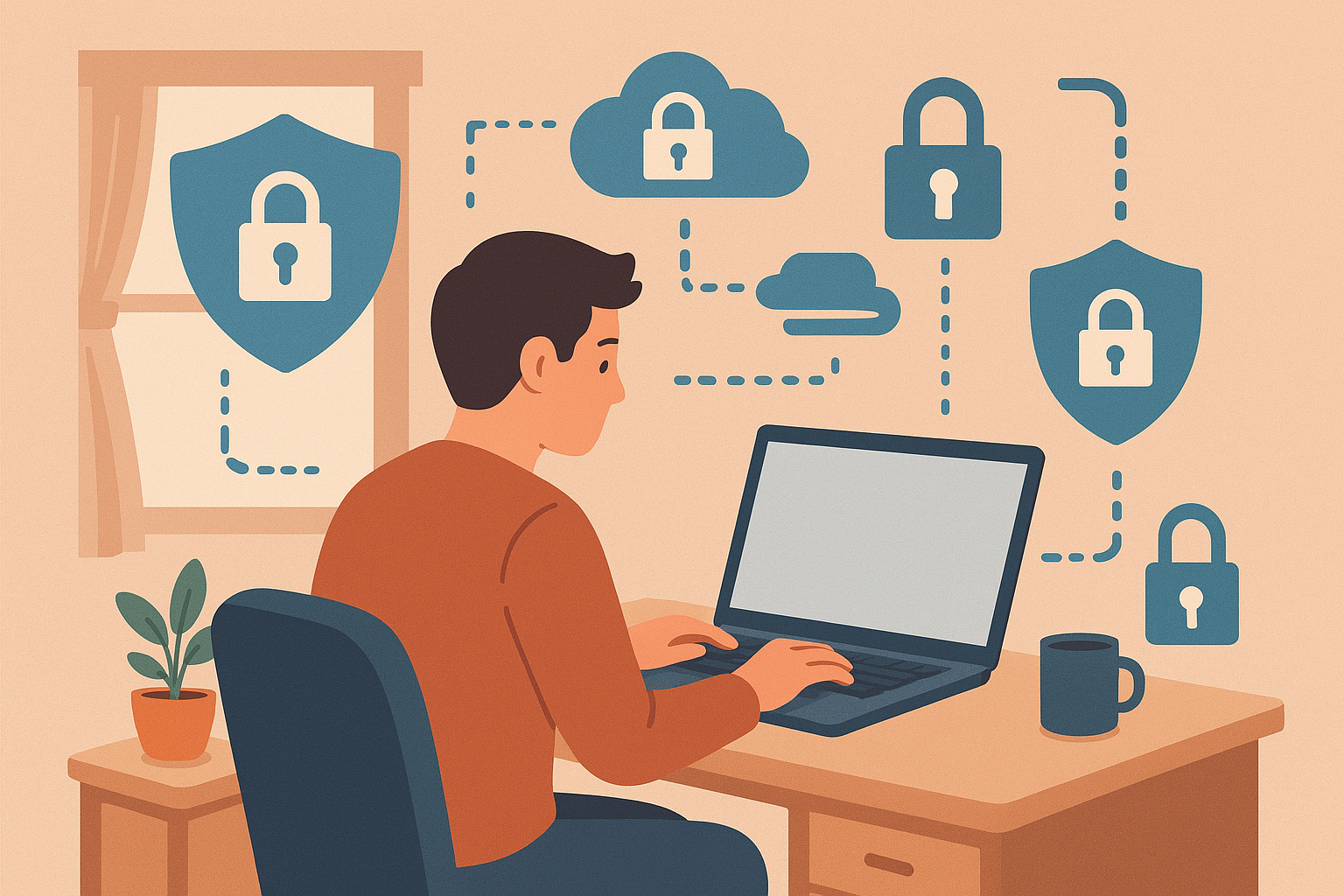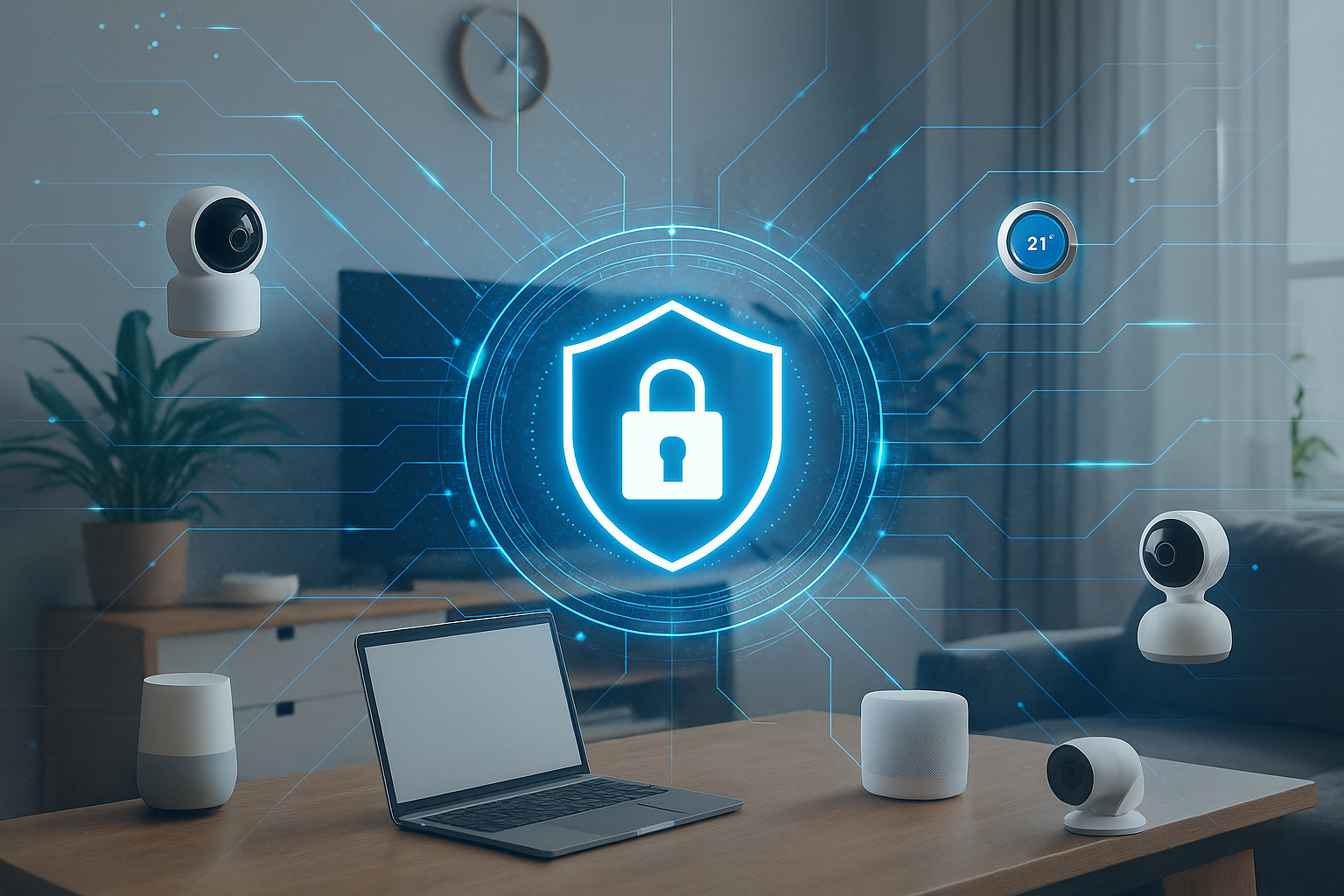Cybersecurity for Remote Workers: Protecting Data Outside the Office
Table of contents
Remote work has transformed the modern workplace, allowing professionals to operate from virtually anywhere. However, this flexibility also exposes businesses to new cybersecurity risks. As employees connect from home networks, public Wi-Fi, and personal devices, ensuring strong cybersecurity for remote workers becomes essential.
This article explores the importance of data protection outside the office and offers practical strategies to safeguard company information from cyber threats.
The Growing Importance of Cybersecurity for Remote Workers
With more organizations adopting hybrid and remote work models, sensitive data often moves beyond secure office networks. Employees handle emails, financial data, and customer records from various devices and locations, creating opportunities for hackers to exploit vulnerabilities.
Cybersecurity for remote workers is not just an IT responsibility—it’s a shared effort among employers and employees. Without proper safeguards, even one weak password or unsecured network can compromise the entire organization.
Common cyber threats faced by remote workers include:
- Phishing attacks that trick employees into revealing sensitive information.
- Ransomware that encrypts files and demands payment for access.
- Unsecured Wi-Fi networks that allow attackers to intercept data.
- Device theft that exposes confidential company information.
1. Use Strong Authentication and Access Controls
One of the most effective ways to enhance cybersecurity for remote workers is through multi-factor authentication (MFA). By requiring a second form of verification, such as a text message or authentication app, MFA significantly reduces the risk of unauthorized access.
Employers should also implement role-based access controls (RBAC). This ensures employees can only access the data necessary for their work. Limiting access prevents accidental leaks and reduces exposure if an account is compromised.
Best practices:
- Require MFA for all company accounts.
- Use password managers to generate and store strong, unique passwords.
- Regularly review and update user permissions.
2. Secure Home and Public Networks
Many remote workers rely on home Wi-Fi or public networks, which are often less secure than corporate systems. To strengthen cybersecurity for remote workers, it’s crucial to secure network connections.
Employees should change default router passwords, enable WPA3 encryption, and ensure firmware updates are installed regularly. When working outside the home, virtual private networks (VPNs) provide a secure tunnel for data transmission, protecting sensitive information from interception.
Tips for network security:
- Use a VPN for all business-related internet activity.
- Avoid public Wi-Fi without encryption or password protection.
- Disable automatic connections to open networks.
3. Protect Devices with Endpoint Security
Laptops, tablets, and smartphones are gateways to company data. Endpoint security tools—such as antivirus software, firewalls, and device management systems—are vital for protecting these devices from malware and unauthorized access.
Employers can use Mobile Device Management (MDM) systems to monitor, encrypt, and remotely wipe lost or stolen devices. This ensures sensitive business data remains protected, even when physical devices are compromised.
Key measures:
- Install trusted antivirus and anti-malware software.
- Keep operating systems and applications updated.
- Enable device encryption to protect stored data.
4. Educate Employees on Cybersecurity Awareness
Human error remains one of the biggest security vulnerabilities in remote work environments. Regular cybersecurity training helps employees identify phishing emails, suspicious links, and other social engineering tactics.
Organizations should foster a culture of security awareness by conducting simulated phishing campaigns, sharing updates about emerging threats, and promoting responsible online behavior.
Employee education topics:
- Recognizing fake emails and suspicious attachments.
- Safely handling company data and documents.
- Reporting cybersecurity incidents immediately.
5. Implement Secure File Sharing and Collaboration Tools
Collaboration is key for remote teams, but using unverified apps or unsecured file-sharing platforms can expose confidential data. Companies should rely on trusted cloud services that offer end-to-end encryption and strong access controls.
Encourage employees to avoid sending sensitive information through personal email or unsecured channels. Instead, use approved platforms with data encryption and activity logs.
Recommended actions:
- Use enterprise-grade file-sharing tools with encryption.
- Limit file access to authorized users.
- Set automatic expiration dates for shared links.
6. Regularly Back Up Critical Data
Backups are essential for minimizing damage from ransomware or accidental data loss. Employers should ensure that remote workers’ files are automatically backed up to secure, centralized locations such as encrypted cloud storage.
In addition, businesses should test their backup and recovery procedures periodically to confirm that critical data can be restored without issue.
Backup recommendations:
- Schedule automatic daily backups.
- Store backups in multiple secure locations.
- Encrypt all backup files before transfer or storage.
7. Develop and Enforce a Remote Work Security Policy
To maintain consistent cybersecurity standards, every organization should establish a clear remote work security policy. This policy defines acceptable device use, data handling rules, password policies, and procedures for reporting incidents.
It should also outline the responsibilities of both employees and the IT department in maintaining cybersecurity for remote workers. Regular policy reviews ensure continued relevance as threats evolve.
Essential policy components:
- Device and software usage guidelines.
- Data storage and transfer protocols.
- Steps to follow during a security breach.
The Future of Cybersecurity for Remote Workers
As remote work continues to grow, cybersecurity strategies must evolve. Artificial intelligence (AI)-powered security tools, biometric authentication, and zero-trust architecture are increasingly being adopted to enhance protection.
Organizations that prioritize cybersecurity for remote workers can build a resilient digital environment that supports productivity while minimizing risk. Proactive investment in security not only protects data but also builds trust with clients and employees alike.
Conclusion
Cybersecurity for remote workers is a vital aspect of modern business operations. Protecting data outside the office requires a combination of secure technology, employee awareness, and strong company policies.
By implementing the practices outlined—such as using MFA, securing networks, educating employees, and backing up data—organizations can effectively safeguard sensitive information, maintain business continuity, and stay ahead of evolving cyber threats.
In a world where work happens anywhere, security must go everywhere too.




Comments are closed